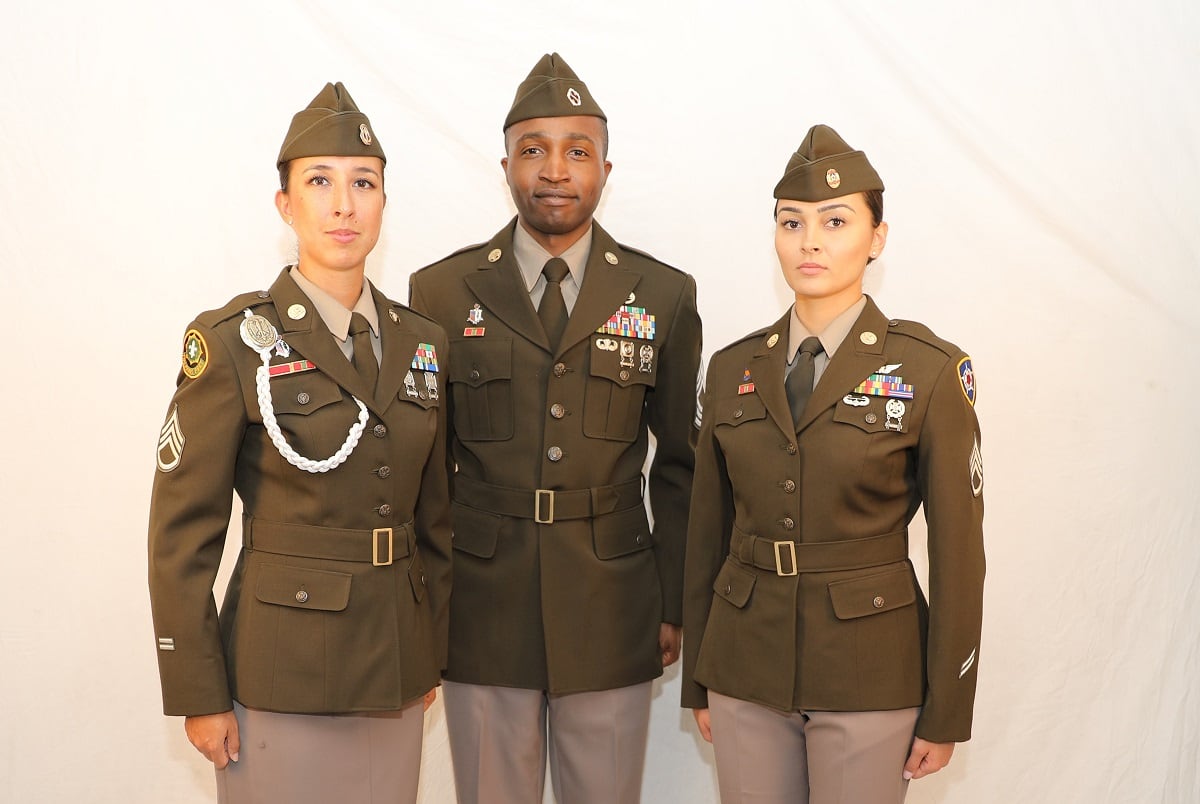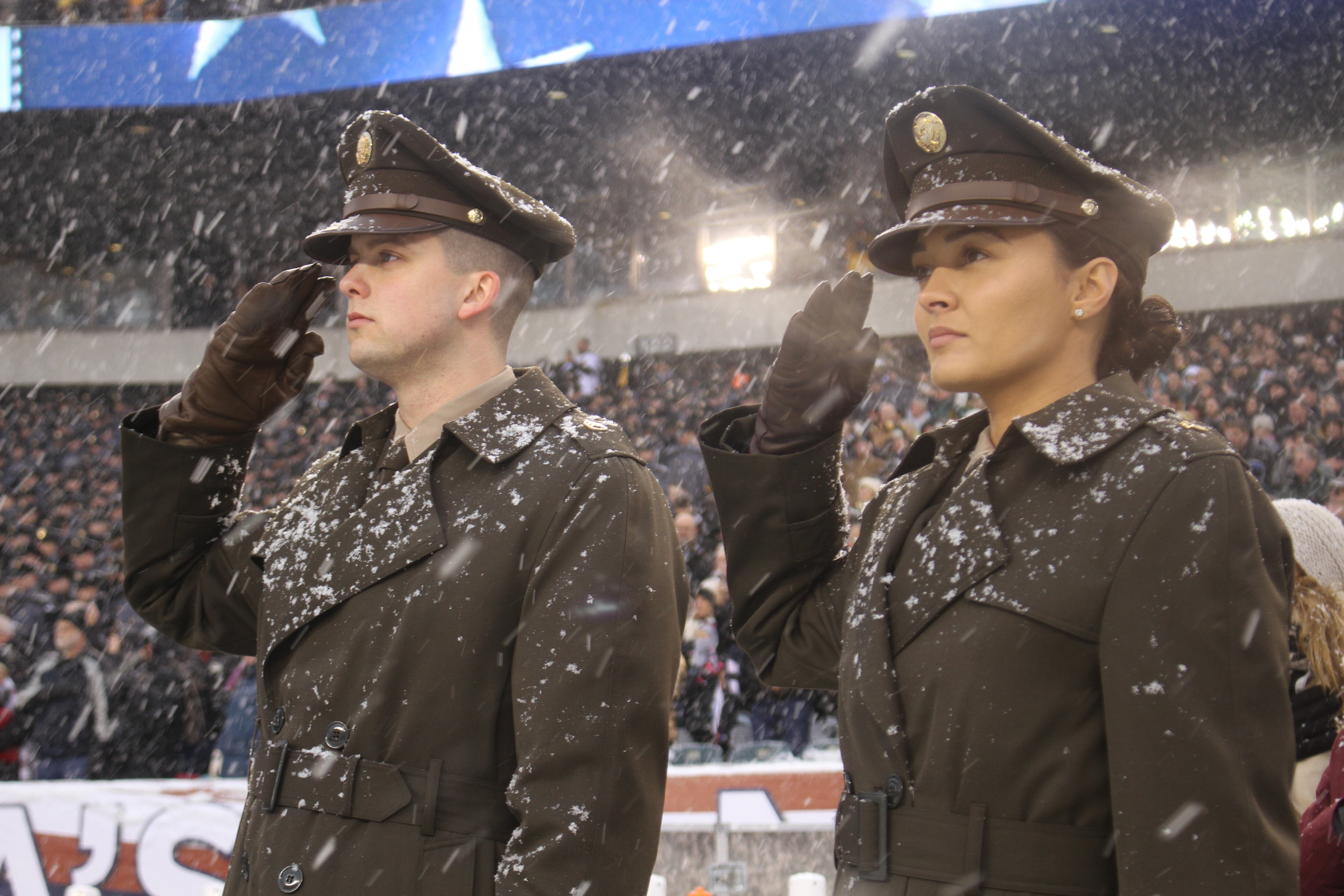The Army was able to straighten out its congressionally mandated notification requirements in time to announce on Sunday, Veterans Day, that the much anticipated “Army Greens” will indeed be your next service uniform.
Formerly known as the “pinks and greens,” the World War II-era officers uniform could go Army-wide as soon as 2020, according to a release that was posted Sunday to the Army’s website but was not shared through any of its social media channels.
“The current Army Blues Uniform will return to being a formal dress uniform, while the Army Greens will become the everyday business-wear uniform for all soldiers,” the release said.
The new uniform will be “cost-neutral,” according to the Army, though details of the budgeting plan were not immediately available.
Sergeant Major of the Army Dan Dailey told Army Times in September that while higher quality materials translated to a dollar-for-dollar more expensive uniform, the fielding plan would negate some of those extra costs in the aggregate.

For example, the release said, new soldiers will receive the uniform when they reach their first unit of assignment.
This, theoretically, would relieve the cost of issuing and tailoring uniforms for soldiers in basic training who end up dropping out, or whose weight fluctuates, requiring more alterations.
RELATED

The uniforms are also expected to last longer ― about six years, Army spokesman Lt. Col. Isaac Taylor told Army Times.
“We are purchasing a higher quality uniform with a longer service life, and we are executing a longer phase-in period to remain cost neutral,” Taylor said, but he did not provide a price breakdown.
The standard uniform set-up will require pants and brown leather oxfords for both men and women. Women will have the option to wear a pencil skirt and pumps. Everyone will also be able to buy a leather bomber jacket as an outerwear option.
The rest of the Army would have until 2028 to pick up the new uniform, the release said.
Meghann Myers is the Pentagon bureau chief at Military Times. She covers operations, policy, personnel, leadership and other issues affecting service members.





